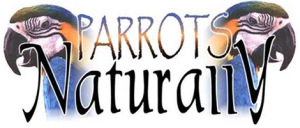Avian Flu A Brief History
- What we know is that this virus has been around for eons; it was first described more than 125 years ago. The virus itself was identified in 1955 in Italy. It is endemic to wild waterfowl, such as ducks. These wild birds may harbor various forms of this virus but do not suffer from the disease because over thousands of years they have developed resistance.
- The 1918 Spanish Influenza (the last world pandemic) is said to have killed 50 million people globally. We think that this virus originated as a variant of avian flu that combined with a human Influenza virus.
- If you have elderly parents or grandparents, mention the 1918 influenza outbreak and I’m sure that you will be told stories of an aunt, uncle or other relative that died in that pandemic. But, remember that clinical medicine was still in the dark ages; antibiotics were rare or in the developmental stages, anti-virals were unheard of because the term virus was not in the dictionary.
- The primary concern with Avian flu today is its impact on the poultry industry.
- In all of the currently affected countries millions of chickens have been killed; hundreds of thousands of surviving poultry are in the process of being vaccinated and the vaccine is proving to be effective.
- The current form of this disease has not yet mutated to the point that it can be contracted from another human!!
- As of today unless you are wallowing around in a barn or on a dirt floor with infected chickens or are butchering infected poultry, you are not going to contract the disease in the form that it currently exists!!
Be Proactive,
- If and when this virus mutates, such that it can be contracted by human-to-human contact, we need to be sure that our government has provided the biotech companies the incentive to be ready to rapidly produce the appropriate vaccines for the current version of the virus.
- There are currently no U.S. companies researching and developing vaccines. The reason is that our laws do not protect these companies from frivolous law suits and do not indemnify them from multi-million dollar judgments being handed down by misinformed juries.
- Contact your Senators and Representative; tell them that their primary function is to protect us not only from terrorism, but also from the threat of pandemic viral diseases that will eventually arrive on our shores.
- Remember that there is no way to predict the genetic makeup of the virus that we fear until it mutates.
- The pandemic is most likely not coming soon! The flu season is Fall, Winter and early Spring so it will not happen this year and most likely will not happen at all.
Every single human case that has been described this year in Viet Nam, Cambodia, Thailand and China has been traced to direct contact with infected poultry.
Every single human case that has been described thus far in Viet Nam, Cambodia, Thailand and China has been traced to direct contact with infected poultry.
- Many false reports are circulating on the Internet and in the media. Go directly to the CDC site or the Pro-med site to get accurate information.
- If it (the so-called pandemic) does materialize, our parrots will be the last concern. Psittacines (hookbills) historically are not highly susceptible to this virus. Unless your parrot is out around migratory birds or wallowing around infected poultry feces, there is essentially no fear that they can become infected.
- Additionally, they (our parrots) cannot easily contract this virus from humans. In other words, as we have asked over and over again:
What is the truly endangered species? And the answer is always Homo sapiens (us).
- What to do now:
Join the American Federation of Aviculture ; they are the only powerful lobby looking out for our interests. See us at Parrots Naturally for forms.
Disclaimer: This is not meant to be a medical evaluation of the H5N1 (Avian flu virus). We do not present ourselves as physicians, pathologists, virologists or veterinarians, but we are here to provide a scientist’s and aviculturist’s perspective on this and other infectious viral diseases, which may present a threat to our parrots and to ourselves.
